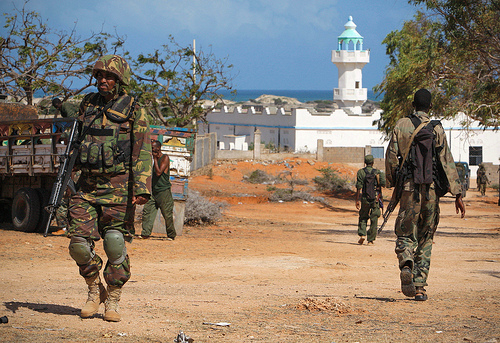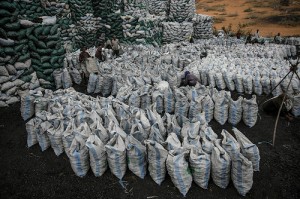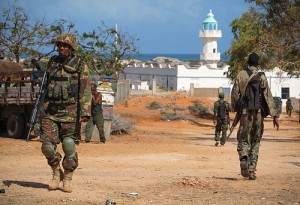
SPECIAL FEATURE: America’s Dual Track for Somalia and the Case of Kismayo
This week, Somali Parliamentarians endorsed the formation of a new, smaller cabinet government, including the first female Foreign Minister for the country. Last month, they ratified Abdi Farah Shirdon as the new Prime Minister of Somalia. With the end of a tortuous transitional period earlier in the year, a more technocratic President, a draft Constitution, and waning Islamic militancy, Somalia looks to be on course for a bright, secure and stable future.
Little could be further from the truth. Recent events remind us that the new national government’s authority is heavily contested, hardly extends beyond the urban surroundings of Mogadishu and is often widely rejected due to its association with only one of at least a dozen major clans of Somalia, the Abgaal. As the first shoots of security appear to break out around Somalia now is exactly the time to remember Somalia’s history and redouble efforts.
Although the United States’ dual track policy for Somalia looks indecisively superficial or even absurdly contradictory, it may provide the bones of a pragmatic way forward. For the people of Kismayo, Somalia’s second city, which was recently wrested back from Al Shabaab hands, it offers them an opportunity to build long-term stability through locally-driven governance.
Parallel tracks
Since the policy was announced two years ago, the United States has been pursuing two parallel but, perhaps until now, seemingly separate goals in Somalia; of standing up a central government in Mogadishu while also supporting peace-building, security and development prospects led by administrations and local regions of a country culturally adapted to diffuse power. Moreover, after decades of destruction, with scarce physical, social, political or economic structures binding the parts of Somalia to its capital, a devolved, bottom-up approach is universally acknowledged to be Somalia’s best hope for long-term peace.
The United States dual track policy is a brave acknowledgement that most successful peace-building efforts in Somalia, notably but not uncritically in the regions of Puntland and Somaliland to the north, have been locally-owned and regionally driven. It is also born out of frustration. Repeated attempts to build central government institutions through grand peace deals at conferences outside Somalia have repeatedly failed.
A locally-driven, adaptable solution to building stable governance among the pastoralists and farmers in the southern reaches of Somalia, in and around Kismayo, is just as important as is it is among the nomadic northern clan people of Somaliland. In the north they have established one of the most stable examples of democratic regional government in the Horn of Africa, albeit not internationally-recognized. On the other hand, government institutions in Mogadishu are remote, and often viewed as either irrelevant or predatory.
Since the administrations of Puntland and Somaliland formed their relationship with the center has been either tense, or outright hostile. At the same time, for Somalis to do everything from travel the world – which they do a lot of – enjoy secure borders, and take a seat at the United Nations and other international bodies, they need the workable, internationally-recognized central government which has just been formed.
What does stability in Kismayo look like?
In the south, Kismayo is now the latest, and most significant, test of how to apply the difficult realities of the dual track to Somalia. Until late September, when Kenyan forces and Somali militia took over it was a stronghold for the Islamist militants, al Shabaab. Even now the security situation remains volatile as local Somali and regional tensions play out. This is not simply about attacks by al Shabaab. Fundamentally, it reflects unresolved political tensions about control of power and limited resources which can spillover into violence from time-to-time.
Outside Mogadishu, Kismayo is the most clan-diverse of all Somalia’s urban centers, positioned as it is on the fault lines of several clan territories, host to numerous displaced people and near the border with Kenya’s North Eastern Province, which itself has been a security hotspot in recent months. The city is comprised of large numbers of the Maheran, Majarteen, Ogaden and Hawiye clan families, as well as significant minority clans, together with those of the Bantu ethnicity.
There is hope. Kismayo is now host to constructive, mostly inclusive, discussions about standing up the contested, self-declared autonomous region of Jubbaland, also known as Azania, a sizeable and economically pivotal area of southern Somalia around the city. As clan representatives meet to discuss future governance of the region and with al Shabaab largely a sideshow, the real sources of conflict in Somalia are becoming apparent.
When the Kenyan military walked into Kismayo, they brought with them a number of militia groups, notably Ras Kamboni comprised of members of the Ogadeni clan. This worried the United States and locals alike that a destabilizing new order was about to be installed in Somalia’s second largest city. It seems that this influence has not disappeared. Reportedly, Ras Kamboni has de facto control of the city, though they claim they will not interfere in the construction of a properly representative all-clan administration. The situation is further complicated by the Intergovernmental Authority on Development and Ethiopian forces who are concerned about the growth of Ogadeni nationalism, on and in its borders.
To meet agreed critical national security interests of building long term stability, the United States will need to be careful in impartially shepherding an all-Somali inclusive process, and must continue to track and manage the involvement of neighboring countries, particularly Ethiopian and Kenya, in the ongoing deliberations.
For the populous areas of Kismayo and its environs, the dual track policy provides the first real opportunity to drive forward a bottom-up form of government, representative of its people. With over a dozen self-declared administrative regions of Somalia staking a claim, debate still rages around the country about how to design devolved government accountable to Mogadishu. Although the detail was deliberately avoided in constitutional wrangling earlier this year, a national assembly agreed to the country becoming a Federal Republic. Military events are now forcing the politicians to play catch-up but it is the people who will generate stability and therefore should play the leading role in determining what sort of de-centralized government Somalia needs.
Constitution-building on the fly
For many around Mogadishu, federalism of any kind is seen as the dissolution of a proud sense of united Somali nationhood, an assault on historical Hawiye clan dominance, a general fear of losing power, or misunderstanding of how federalism can work. For others it is the only glue that will hold a damaged country together. It is increasingly clear that there are widely differing opinions about how to constitute future Somalia, an issue that can no longer be isolated to individual regional administration.
Most maps of Somalia grossly oversimplify the distribution of clans into a neat patchwork of territories, which ignores the obvious realities of a nomadic society. Moreover, the maps dangerously mask the presence of minorities. Even if administrative boundaries were to be by clan, this risks institutionalizing tensions and permanently balkanizing the country.
The challenge will be to develop a structure that reflects Somalis’ style of clan-based, consensus politics, that is truly inclusive and works with, but is not arbitrarily subject to, Mogadishu. Until now, due to relentlessly difficult security circumstances, neither the United States nor the government of Somalia has had the opportunity to support local peace-building efforts on this scale this far south in the country.
Now that al Shabaab has been driven out of most urban areas of the country, there is an urgent imperative to demonstrate a tangibly better way of life to Somalis outside the capital, so that any form of post-al Shabaab governance is seen as legitimate. In this phase we are starting to see the real cause of conflict in Somalia; differences about the distribution of authority and power.
What can the United States do?
The United States must support the local track in earnest while at same time identifying historical unifying trends in Somali politics and society to build a single state. While the extremist al Shabaab movement is generally unpopular, Islamic forms of administration in Somalia’s recent history have attracted legitimacy through the provision of rudimentary, albeit harsh, forms of local justice, delivering basic services and often allowing non-governmental organizations to operate.

Tens of millions of dollars of charcoal are stockpiled at Kismayo port, southern Somalia. Photo Credit: AU-UN IST / STUART PRICE.
The process will require active mediation, but not interference, from the African Union and the Intergovernmental Authority on Development, and their member states. To keep Somalia’s progress on course, a more representative, local style of governance needs to be encouraged, supported and monitored by the United States. Recognizing that smaller may be better in order to minimize corruption, the challenge will be to ensure that early development is now delivered through the hands of village and district governance and not through parallel, unaccountable delivery mechanisms. There are effective models of development, based on and reinforcing local governance, for areas that have worked for areas emerging from violent conflict.
Even with the latest turn in the story of the multi-million dollar stockpile of charcoal in Kismayo we are reminded that the two tracks risk clashing and rending the country apart if authority does not catch rapidly catch up with legitimacy. Once the national government is well established in Mogadishu, the next step is to, with even more vigor and impartiality, substantiate the local track. The next step for the United States is to identify, accept and reinforce historical Somali trends that will help unite the country, forge the two tracks together and enable a functioning state to rise from the ashes of the current conflict.
The benefit of United States policy thus far has been its pragmatic adaptability to events on the ground, as it has reinforced emerging demonstrations of legitimate stable governance. One important lesson from recent Somali history is the important and moderating influence that supra-clan Islamic governance can exert on a damaged society. Reclaiming moderate Islamic nationalism from the hands of the extremists has been widely argued as a driver of stability and unity.
In the absence of American troops on the ground, which simultaneously attracts domestic scrutiny and constrains policy, the United States can afford to be bold in meeting its objectives in the region. It has been agile and brave in its political support before, and is showing innovation in its support of an African-led military intervention. Now, growing long-term stability depends on, with full understanding and knowledge, cultivating real Somali ownership. Negotiations around Kismayo and the concept of Jubbaland reflects constitution-building in earnest, with national significance, and has the potential to decide the course of Somalia for decades to come.







[…] characteristic sectarian texture, giving the opposing views an unmistakable clan identity. Blogger Matt Freear somewhat captures this regional/clan dichotomy: “for many around Mogadishu, Federalism of any […]